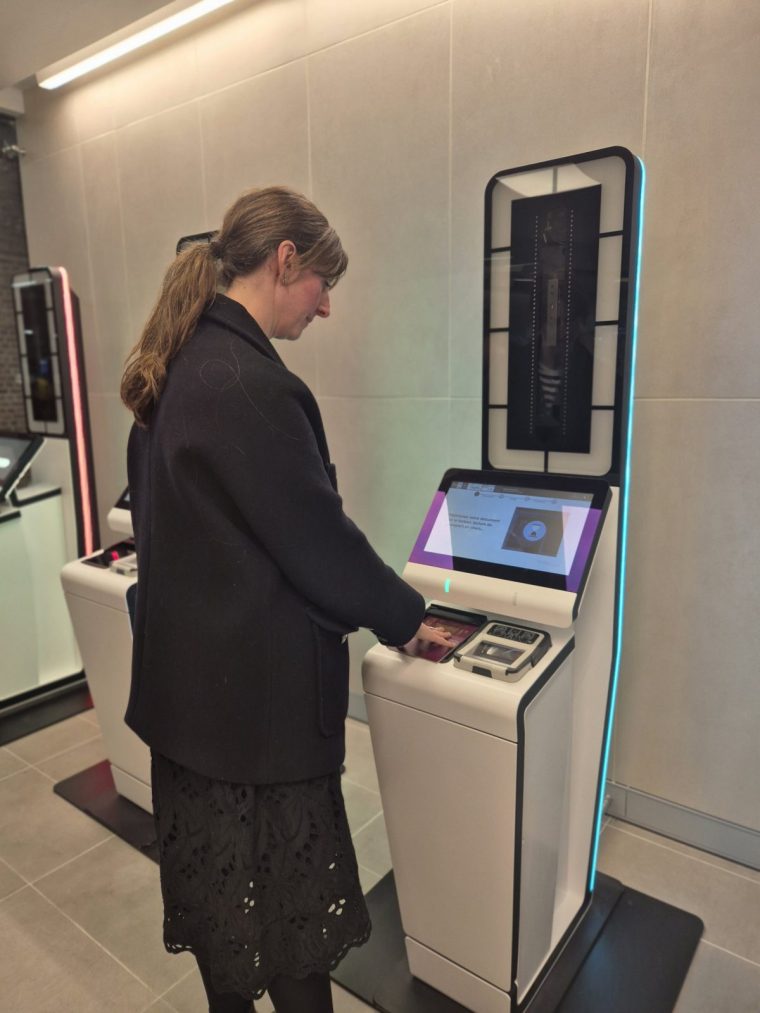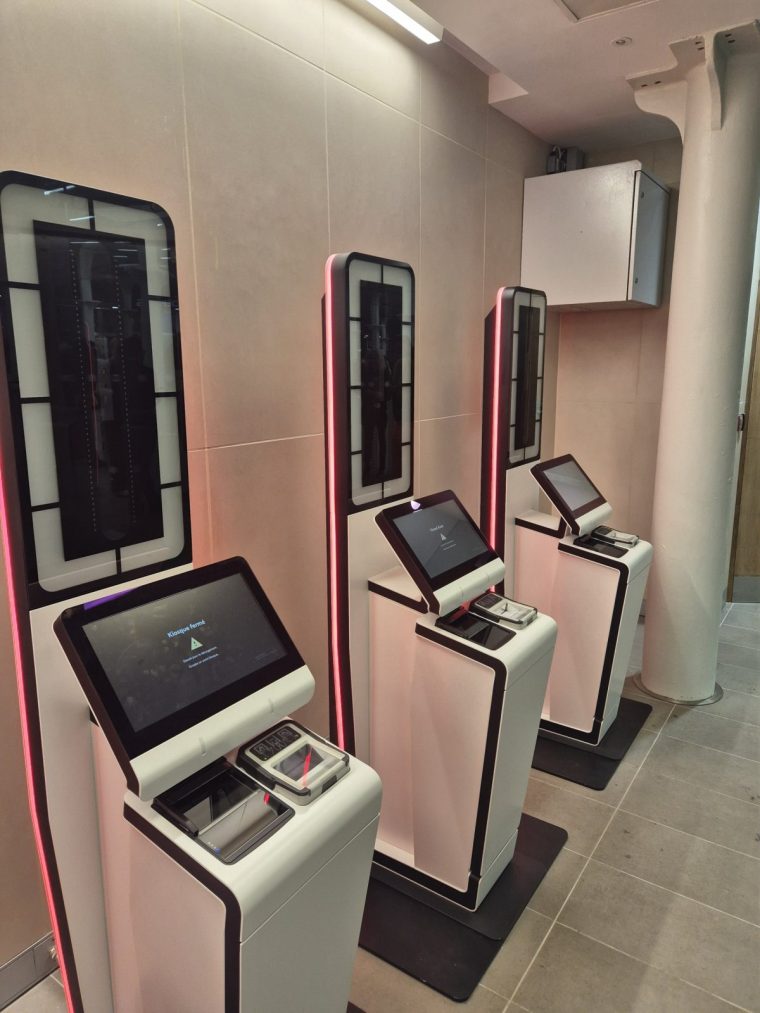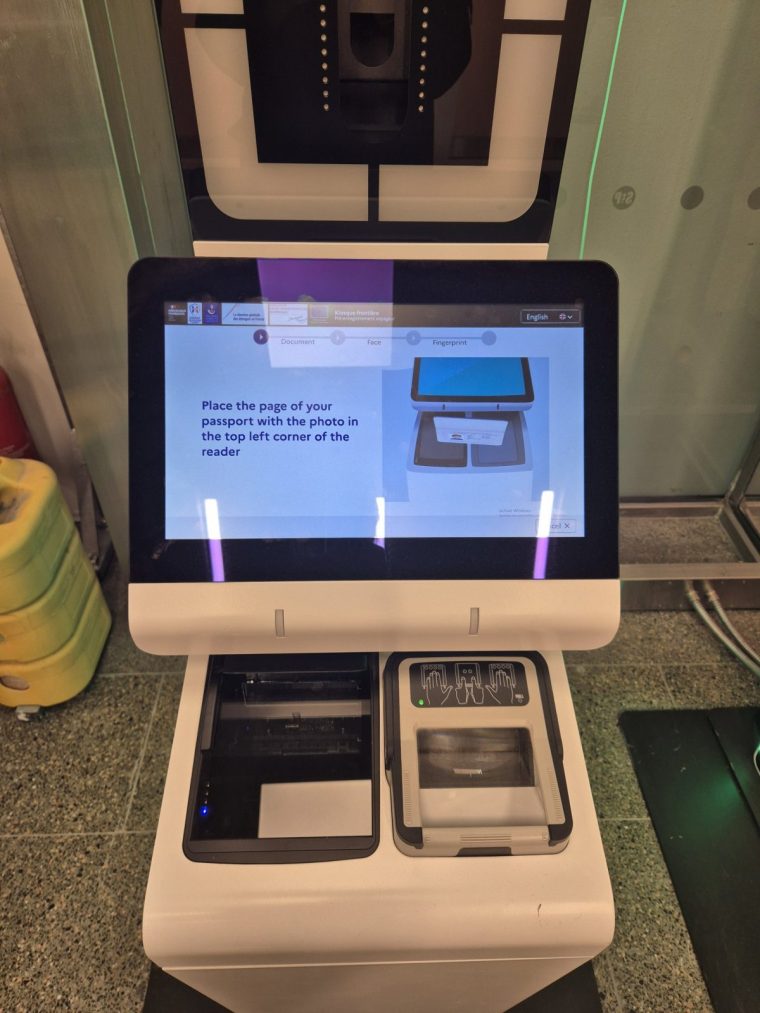Less than three weeks until the repeatedly-delayed launch of Europe’s Entry/Exit System (EES), Eurostar’s 49 self-service data processing kiosks are installed and waiting for passengers.
EES will soft launch from 12 October, with member states within Europe’s Schengen Area permitted until 10 April 2026 to complete the roll out.
A Eurostar spokesperson confirmed that there will also be a permitted “firebreak” of 90 days to pause or pull back on EES checks if delays become unmanageable. This means that the rollout could be completed as late as July 2026.
While the checks are designed to strengthen the Schengen Area border in Europe, the UK has three juxtaposed Police aux Frontières French border controls at Eurostar’s St Pancras terminus, as well as at the Channel Tunnel in Folkestone and the Port of Dover.
From 12 October, Eurostar’s business and frequent travellers will be invited, at the station, to register their biometric details for EES. There will be no obligatory biometric checks for the first 30 days.
There will be some biometric testing between 11 December and 11 January 2026. The next phase will take place from 12 January 2026, when all 49 kiosks will be “switched on” for wider passenger use and at least 50 per cent of all crossings will be registered until the roll out is complete in April.
Anyone without an EU passport – including “third country national” Britons since Brexit – will need to have their face and fingerprints scanned alongside their passport.
The biometric data will be securely stored for three years, or until the holder’s passport expires (whichever comes first), when EES checks will need to be completed again.
Children under 12 will not be required to provide fingerprints but will have facial scans taken.
 EES will be required every three years (Photo: Sophie Lam)
EES will be required every three years (Photo: Sophie Lam)
The digital process will replace physical passport stamping and is designed to make border checks more secure and more efficient.
Eurostar’s London terminus within the wider St Pancras station – which can see up to 100,000 passengers passing through per day – has been particularly challenged by its constrained, Victorian infrastructure. Eurostar alone processes more than 2,000 passengers per hour at St Pancras and as many as 45,000 per day.
London St Pancras Highspeed, which holds the concession to the station and high-speed rail line to the Channel Tunnel – has, along with Eurostar, spent £10m on installation of the new kiosks. The i Paper went to test them out before the 12 October launch.
Where and when do checks take place?
Eurostar passengers will be notified 30 days before travel about EES requirements. The checks are completed at St Pancras International on the day of travel, no earlier than four hours before check-in.
A key challenge will be the station layout. The EES kiosks are grouped in three zones around St Pancras International, the largest of which – 28 kiosks – is opposite the entrance to the Thameslink train platforms.
These are a couple of minutes’ walk to the smallest zone, holding just seven kiosks next to Eurostar’s entrance gates.
A third zone with 14 kiosks is located on an upper level across the station’s busy retail concourse and will be used to manage peak traffic on busy days.
 Zone A holds seven kiosks (Photo: Sophie Lam)
Zone A holds seven kiosks (Photo: Sophie Lam)
When we visited midweek, post-rush hour, this area was busy with Eurostar passengers spilling out onto the retail concourse as they queued to enter.
Eurostar gave assurance that there will be staff deployed to guide passengers from the upper-level overspill kiosks to check-in gates on busy days.
How do the biometric checks work?
The biometric checks are relatively straightforward. We were asked to scan our passport, then confirm whether it was a non-EU document. Our face and fingerprints were scanned by the machine, which can be adjusted for passengers using wheelchairs.
Then, we were asked four key questions, which we were reminded are binding:
- Do you have a return ticket?
- Have you pre-booked accommodation?
- Do you have enough money for your stay?
- Do you have medical insurance?
What if you answer ‘no’ to any of the questions?
We put this to the test. Once the checks were complete, there was no prompt to follow a different route to check in. However, a Eurostar spokesperson said that once the kiosks are operational, passengers who answer “no” to any of these questions will need to be manually checked by a French border guard.
The latest research by Abta, the Travel Association, found that as many as one in four holidaymakers went on a trip abroad in the past seven months did so without travel insurance, rising to two in five travellers aged 25 to 34.
While insurance is not required of third-country nationals by the European Commission, the French Government stipulates that visitors must “have an insurance certificate covering all medical and hospital expenses for which you may be liable for the duration of your stay in France, as well as medical repatriation costs and expenses in the event of death.”
These are not covered by the Ghic (Global Health Insurance Card) that provides reciprocal state healthcare in Europe.
 One of the kiosk prompts (Photo: Sophie Lam)
One of the kiosk prompts (Photo: Sophie Lam)
It also says that visitors with a hotel booking must be able to prove they have at least €65 (£57) per day available for their stay, rising to €120 (£105) without a hotel booking.
It is possible that travellers who answer no to these questions at EES kiosks would be refused entry to France.
How long will the checks add to journeys?
The kiosk process took us around 80 seconds to complete. However, when the scheme launches fully, it is possible that queues for kiosks on peak days such as school holidays – particularly next Easter – will create a logjam, adding time to passenger journeys.
It is highly likely that the four questions detailed above will concern passengers, who may not be able to confirm insurance or accommodation and may have to be processed manually.
Eurostar is confident EES will launch successfully at St Pancras, and is aiming to reduce the check-in time from 75 minutes before departure to 60 minutes before departure.
It has also installed 18 EES kiosks at Paris Gare du Nord, and increased the number of manual booths at the border in London and Brussels, as well as the number of e-gates in London, Paris and Brussels. These will also be used as back-up for tech glitches once EES is operational.
